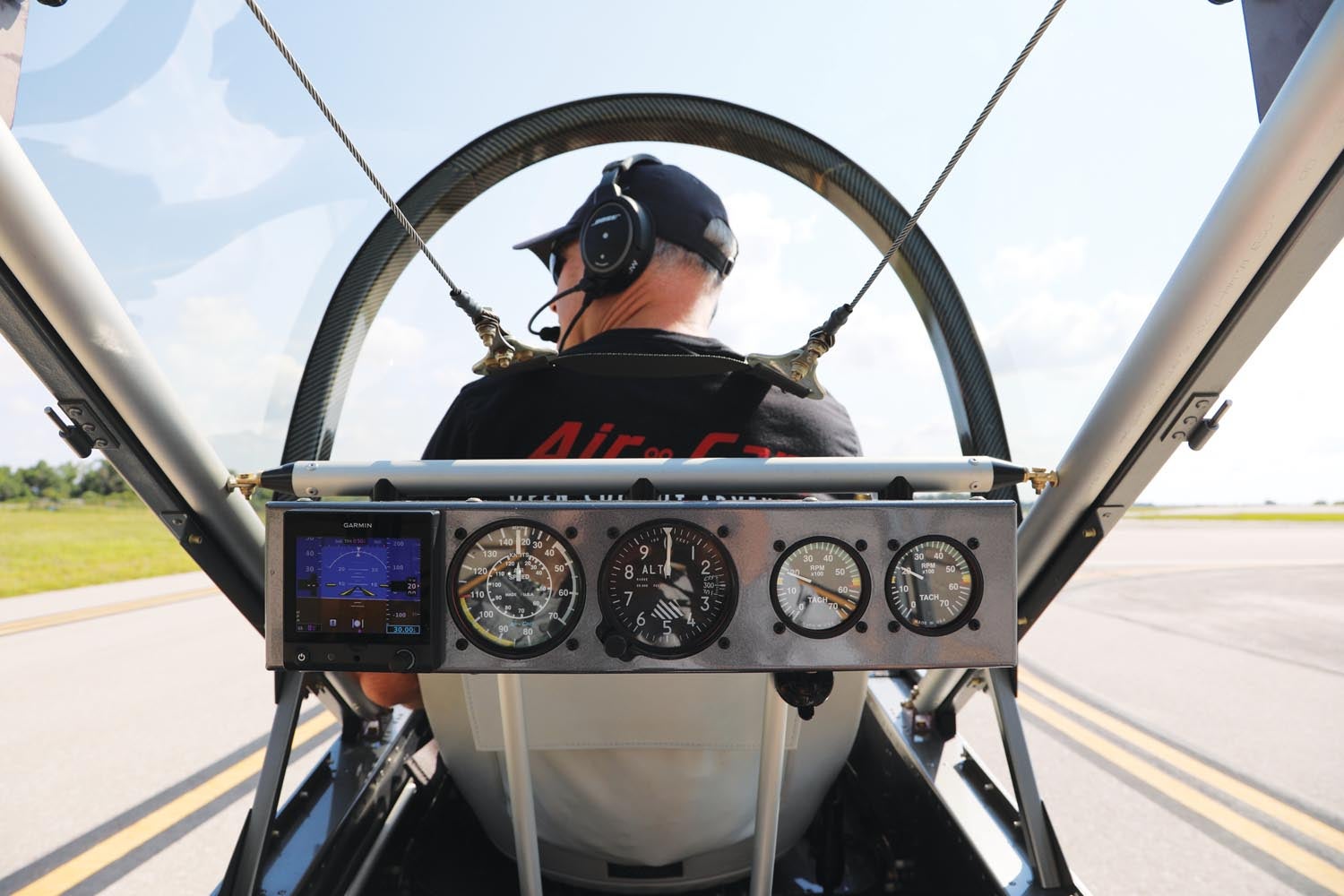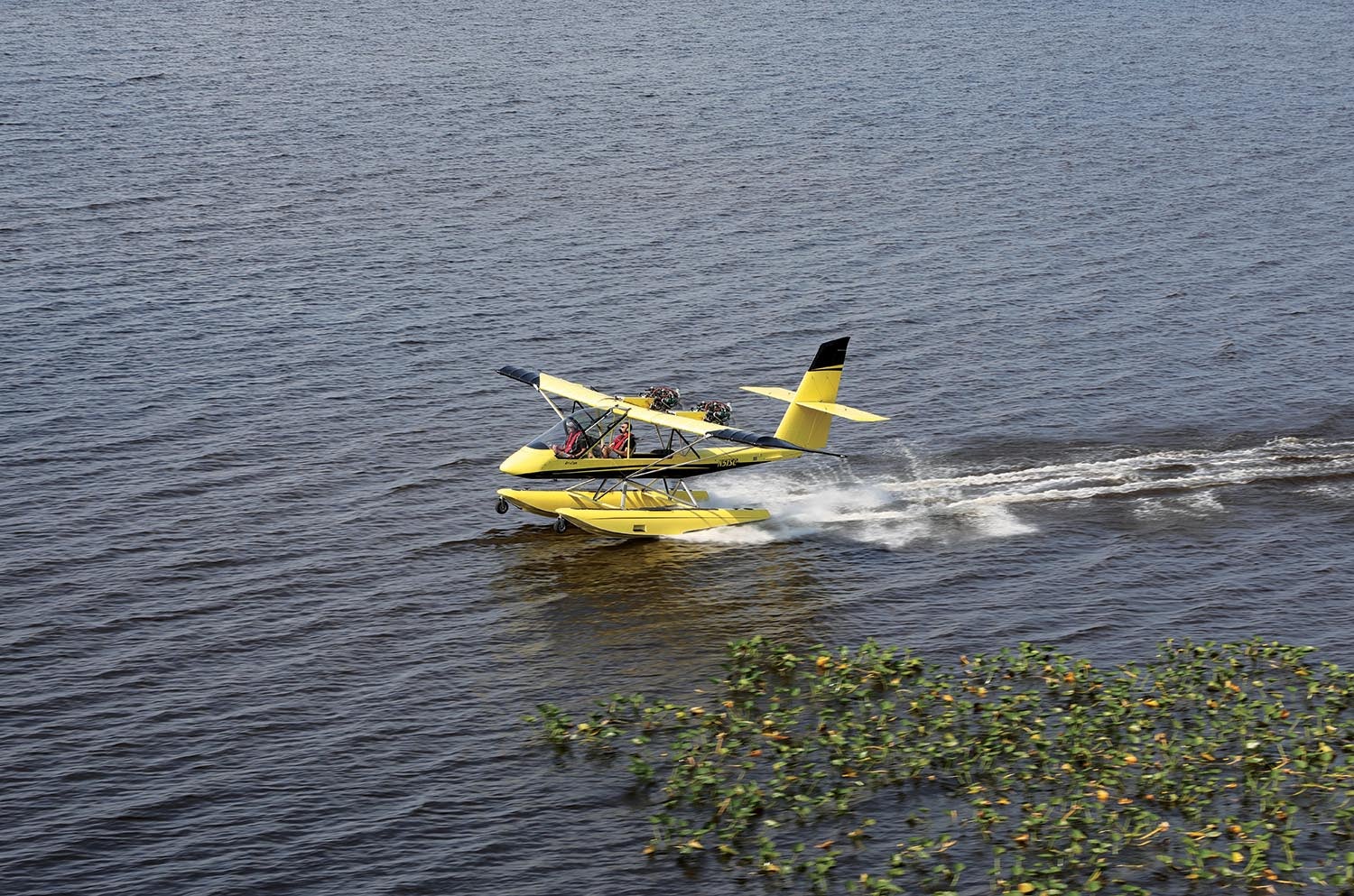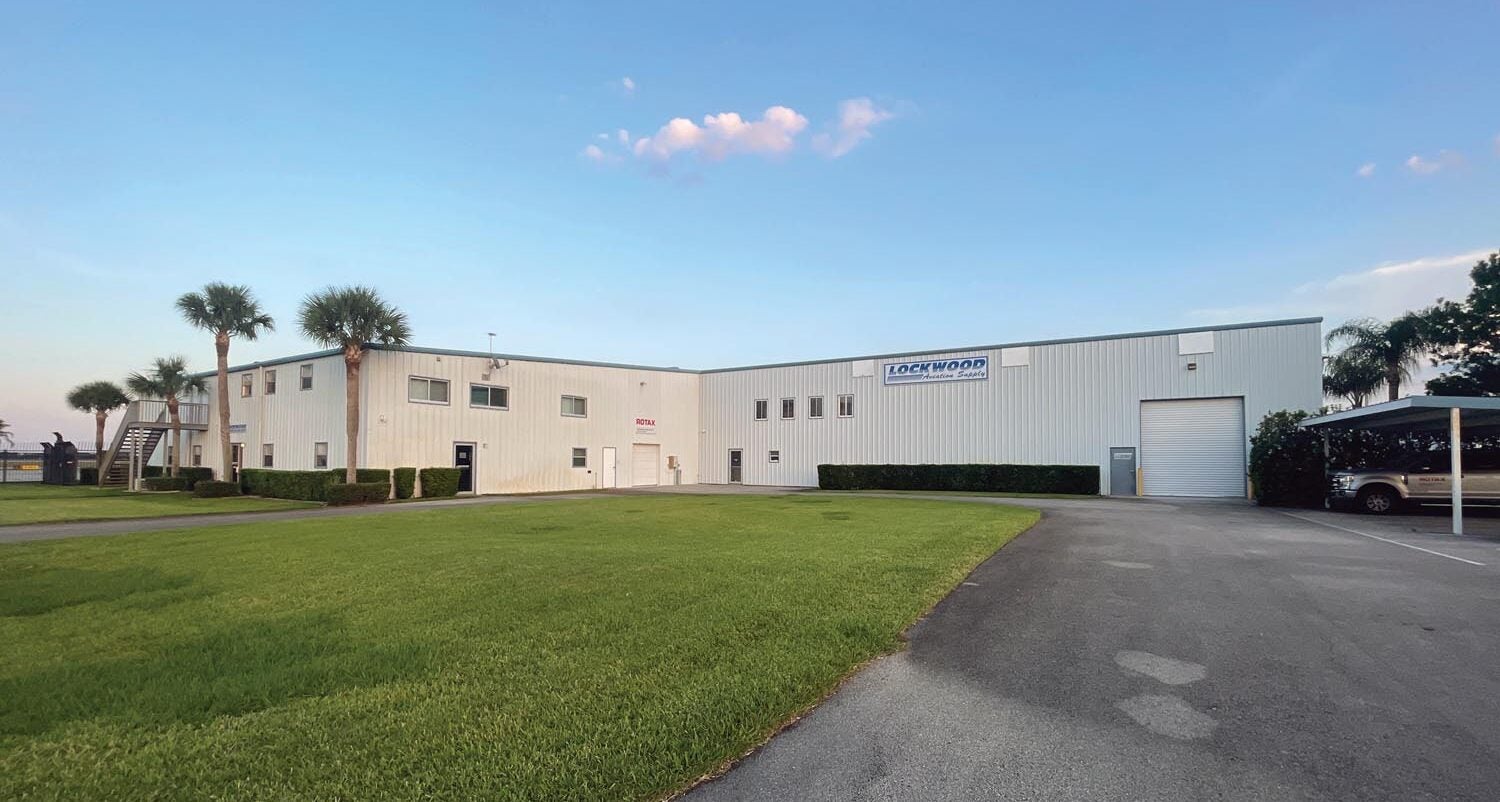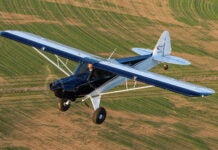 So what can you do with a multi-engine seaplane rating? You can fly firefighting aircraft that scoop water from lakes and dump it on big fires. You can fly an air taxi at a couple of small operations in Florida or Washington. You can fly PBYs with the Commemorative Air Force. Or, perhaps best of all, you can build or buy an AirCam and put it on floats.
So what can you do with a multi-engine seaplane rating? You can fly firefighting aircraft that scoop water from lakes and dump it on big fires. You can fly an air taxi at a couple of small operations in Florida or Washington. You can fly PBYs with the Commemorative Air Force. Or, perhaps best of all, you can build or buy an AirCam and put it on floats.
The difficulty is getting the necessary rating, because almost no one rents seaplanes—much less multi-engine seaplanes. There are just a couple of schools in the country that offer the single-engine sea (SES) training and rarer yet is the multi-engine course. (A firm that does offer MES instruction charges $1500/hour for a Grumman Widgeon.)
The notable exception? Lockwood Aviation in Sebring, Florida, home of the amphibious AirCam. There’s a good reason, too. Without such training, Lockwood would have no one rated to fly their airplanes—and no ratings means no sales. “No problem,” you say, “they can just hire an instructor and train folks, right?” Well that’s what they do, but since the AirCam is an Experimental, using them for commercial instruction is generally prohibited.
The FAA recognized the chicken-and-egg problem that the regs presented and created a Letter of Deviation Authority (LODA) specifically for Lockwood that allows them to provide training in the twin-engine AirCam. And while the original idea was to provide this for AirCam owners, the LODA allows them to give the training to anyone who asks. I was told of a firefighting organization that sent new hires to Lockwood to get the rating so that they can get a head start on the type-specific training on the big water bombers. To see what the process involved—and to have a few days of fun in the AirCam—I traveled to central Florida for the two-day course (plus a checkride day) to have the MES experience.
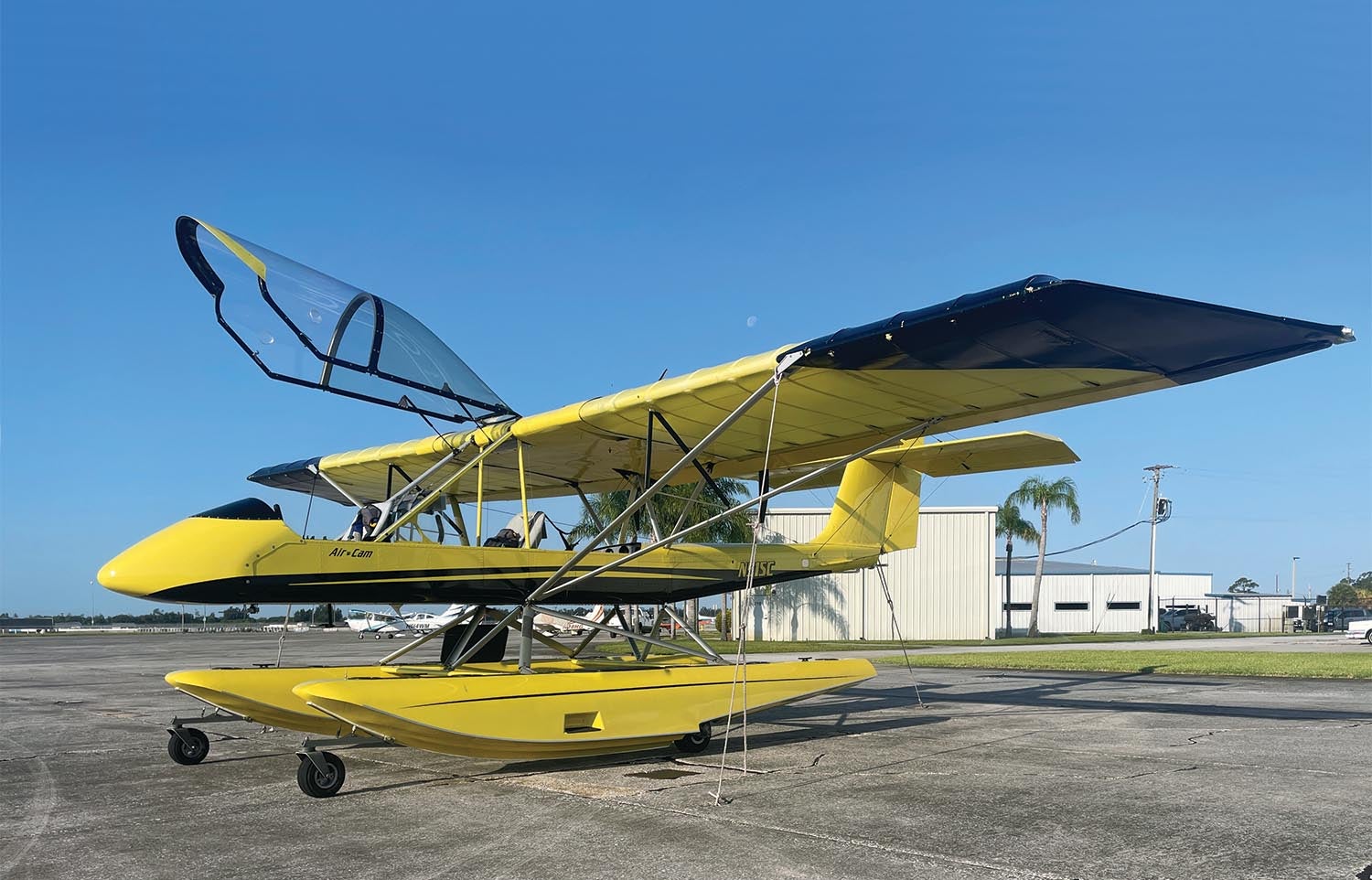
Day 1
I had arrived the evening before and was given the keys to the guest apartment on the second floor of Lockwood Aviation’s office wing. It’s a great place to stay—two bedrooms, a living area and a full kitchen—and Sebring itself is a 15-minute drive away from the airport, so if you can get it, I recommend it. A low-key evening left me ready to hit the ground running as the training started the next morning.
But before we hit the lakes, we had to go through a little ground school. Since I came to Lockwood Aviation already possessing a single-engine sea rating, I technically already understood most of the material. But that was five years ago, and I had only touched one seaplane in the interim, so a thorough review was appreciated. My instructor, Ben Lively, did a good job of quickly probing what I remembered and what I didn’t, and since I seemed to have a pretty good grasp on the basics of reading wind and water, he concentrated on operational mnemonics and procedures.
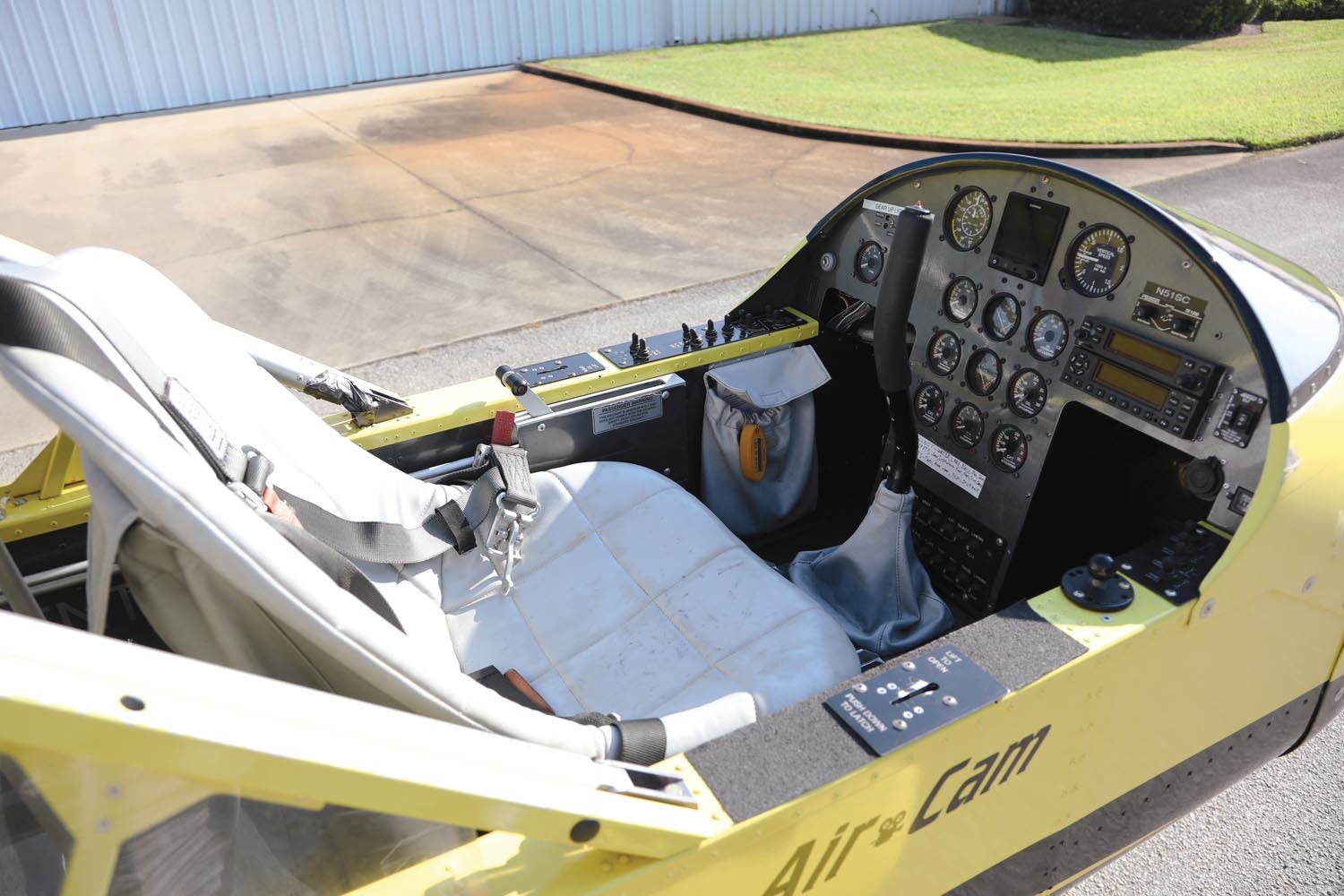
You’ll need to remember three things—WLNOT, GIFFTS and FATS. The WLNOT checklist (water/wind, lane, noise, obstructions, terrain/towers) is used to look over a potential landing area when you scout the lake. GIFFTS (gear, instruments, flaps, fuel pumps, trim, speed) is your aircraft checklist before landings. And FATS (flaps, area, trim, stick full back) is your takeoff checklist. Why not simply use GUMPS and CIGAR like you do with a typical landplane? Well they still work, but “gear” is different depending on where you’re landing, and you don’t generally have to worry about a lot of the WLNOT items for runway landings—so specializing puts you in a different frame of mind because seaplanes are…different.
Preflight preparation takes a little more time—some of which involves getting a ladder to check the engine oil level. You start on the ground, going over the floats. This involves checking all the compartments for water (Lockwood leaves the compartment covers off overnight, so you check for water then install the covers) and making sure that nothing feels loose or bent. Once you’ve gone over the floats, you begin the airframe checklist, and this has a few unique things like checking the controls for free and correct motion by standing outside and moving the rear stick around. Once you get into the cockpit, you won’t be able to see the tail surfaces, so best check them out before you strap in. You also want to check very carefully for loose items in the baggage area or cockpits (if you are flying without the canopy) since anything that goes overboard can (and might) go through a prop—this is a pusher after all.
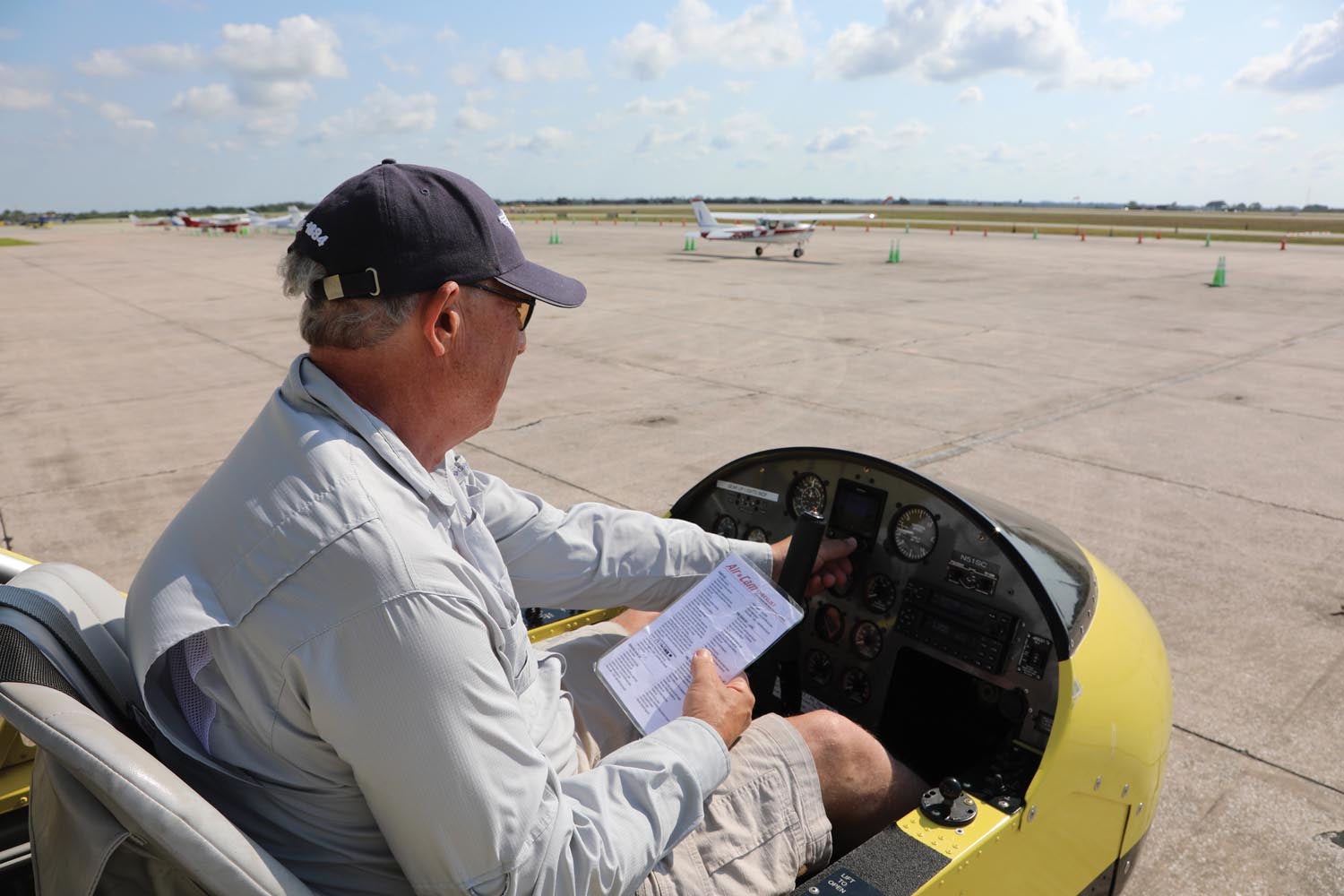
The final part of the checklist is for the engines. For this, you need the aforementioned stepladder to reach up and check the oil. And for those familiar with the dry-sump Rotax motors, spinning the props to “burp” the oil system is not unusual. But you’ll have to do it from that ladder, because they are way up there. You also want to check that the eight springs that hold the exhaust system in place are securely safety-wired so that they can’t come loose and head through those props. Fortunately, the engines are easy to check, as they are completely uncowled and everything is hanging out in the breeze.

Of course, the AirCam on floats is an amphibian, so you have to also know how to operate it as a landplane, and that is how we started off—with a departure from Sebring Municipal on Runway 14. Taxiing the tall airplane makes it feel bigger than it is. The wingspan isn’t much more than that of a Cub but you have dual throttles that enhance your feel of a “big” airplane. But it is actually quite docile and maneuverable. With swiveling nosewheels (yup, there are two of them), you can steer with brakes and/or differential throttles and pirouette on the ramp quite nicely.
Land takeoffs are done with the flaps up—all you need to do after rotation is raise the gear. All water takeoffs, on the other hand, are done with 25° of flaps—but since there is no flap indicator, you simply look back from the cockpit and lower the electric flaps by holding the switch until the outboard corner of the left flap lines up with the wing’s lower flying wire. The instructors refer to this as the flap being “on the wire.” Full flaps are used for a few landings; you just hold the switch down until they stop moving.
Speeds for the AirCam are in a world all their own. Stall is about 39 mph, Vmc (minimum controllable) is 43, Vyse is 55 and best climb clocks in at 60 mph, though the instructors told me that their usual examiner (Jon Brown) prefers that you climb at 70 to add a little margin in case an engine quits.
I was surprised on our first land takeoff at just how quickly things happened for a “slow” airplane. We closed and latched the canopy after taxing into position, then I advanced both throttles to full and before I could count to any significant number we rotated and were airborne. My instructor quietly reminded me “gear,” and I had to hunt for the little toggle switch for a second, then while I was holding that in the “up” position and waiting for the motors to cycle, it was already time to get the flaps. I blew right through the briefed 500 agl altitude while doing those two things. And while doing that, it was already time to bring the throttles back to a good cruise number of about 4500 rpm. Like I said—things happen quickly in a slow airplane, mainly because the speed range is so narrow.
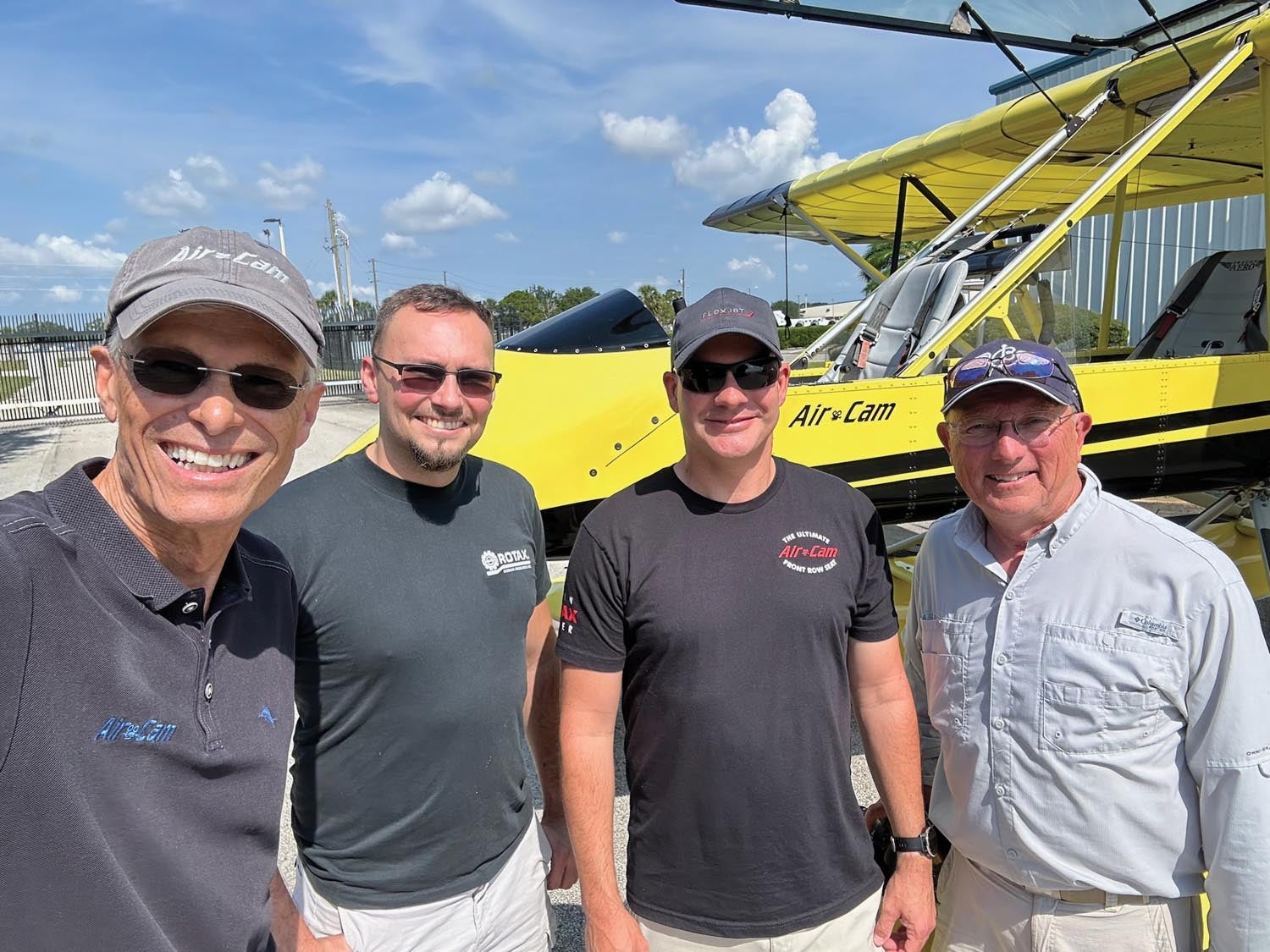
Going To Get Wet
Lake Istokpoga is a stone’s throw south of Sebring, making it a perfect location for Lockwood’s training. Our first day of training was a weekday in May, so water traffic was minimal. Winds and waves were light and variable, which frankly made it slightly more difficult when it came to practicing seaplane operations, because there was no rough or truly glassy water and the wind was from whichever direction you arbitrarily decided to call it. Some sort of steady wind would have made it more obvious how to choose landing lanes, but we made the best of a “good” situation and practiced all of the maneuvers required for the practical test.
Basically, you have to be able to show normal landings and takeoffs, rough water landings and takeoffs (equivalent to soft field operations on land), confined water landings and takeoffs (short field operations), glassy water landings and takeoffs (for which there is almost no equivalent except for dry lake bed ops in the West) and—special for the MES rating—single-engine landings. No single-engine takeoffs are required or advised!
Before we got started on multiple takeoffs and landings, however, we got to play boat—after one landing, we played around with step-taxiing (which is running around “on the plane” of the floats) across the lake, with some 360° turns thrown in to get the feel for the top-heavy and wind-catching “boat.” This is a great exercise for anyone who doesn’t have a lot of on-the-water experience, and also for those who do because the floatplane feels particularly tippy in turns if you’re going a bit fast or trying to turn too tight. You also get the feel for porpoising if you allow the nose to get a bit low—a motion quickly damped by bringing the stick back a little. Too much speed and you’ll lift off, too little and you’ll sink back into a plow. Getting the feel for it is probably easier for those with boating experience.
Maneuvering on the water is actually easier with the twin-engine airplane because you can steer with differential throttle as well as with rudder or ailerons. The one thing you don‘t have with the AirCam is water rudders (little rudders on the back of the floats) because, well, you don’t need them.
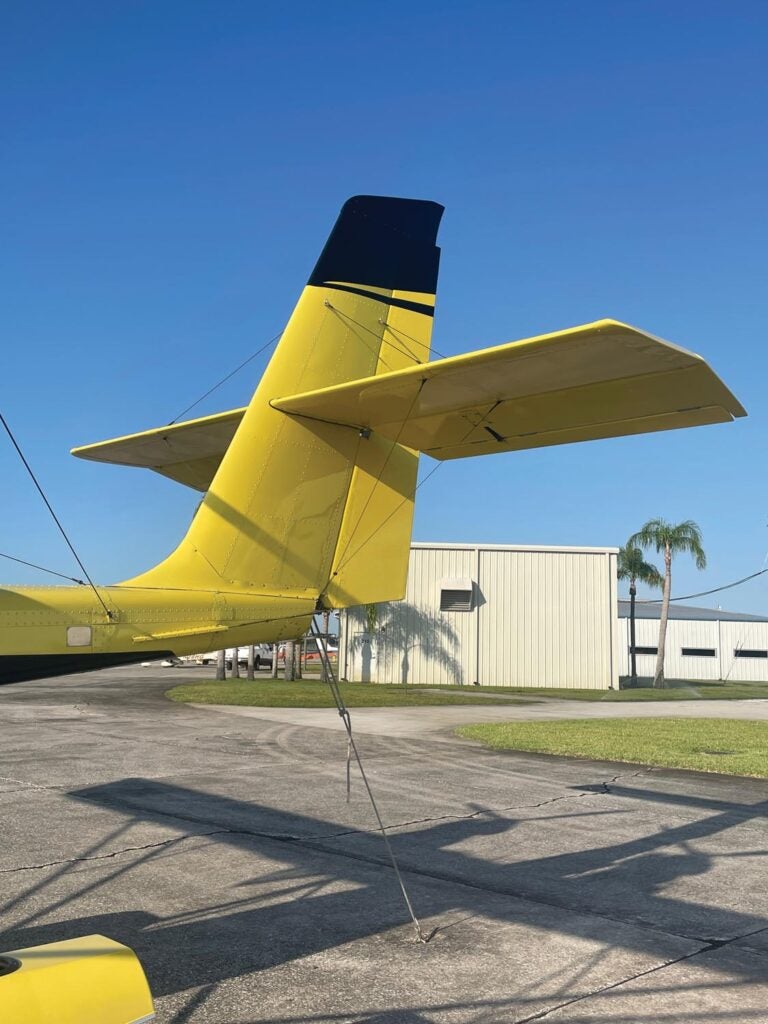
After getting familiar with the handling “on the step,” we started flying again—with multiple normal landings followed by the specialties. Rough water ops are analogous to rough runway ops. You want to minimize the time beating the airplane up on the rough surface. Confined water ops are basically spot landings to a reference point and takeoffs that are more interesting—you accelerate onto the step, then begin a turn to stay in a smaller area, all the while accelerating to takeoff speed when one float comes up. Once you break water, you continue the turn and fly out of your imaginary mountain valley lake.
Glassy water operations in the multi are the same as for a single-engine seaplane—you set up a descent rate that is not going to damage the airplane when you hit the water and let it fly itself on. This is because you simply can’t judge height over the water very well if there is no texture. While I learned this technique during my SES training, I have used it more frequently in land-plane flying to dry lake beds, some of which are large enough that you don’t have good altitude cues when you’re landing. I find that glassy water is more forgiving than lake beds, however. Glassy water takeoffs mean lifting one float before the other—to break the suction that is usually broken by ripples or waves— then flying away.
The only real difference between single and multi training is the single-engine landings. And, of course, the AirCam is a little different than most twins because the engines are fairly close to centerline and the props don’t feather. That means you just pull back one engine (the right engine is critical) to idle, go full power on the other, then fly an approach and landing to the lake. The AirCam is so forgiving that you at first have to recognize that an engine has failed (this can take a little while if your hand isn’t on the throttle when the instructor pulls it back) because you still have plenty of power to keep flying. In fact, you have to throttle back the good engine a little to get down to maximum flap speed to make a landing. Holding rudder into the good engine is very natural and doesn’t give you “sewing-machine leg” like more powerful twins.
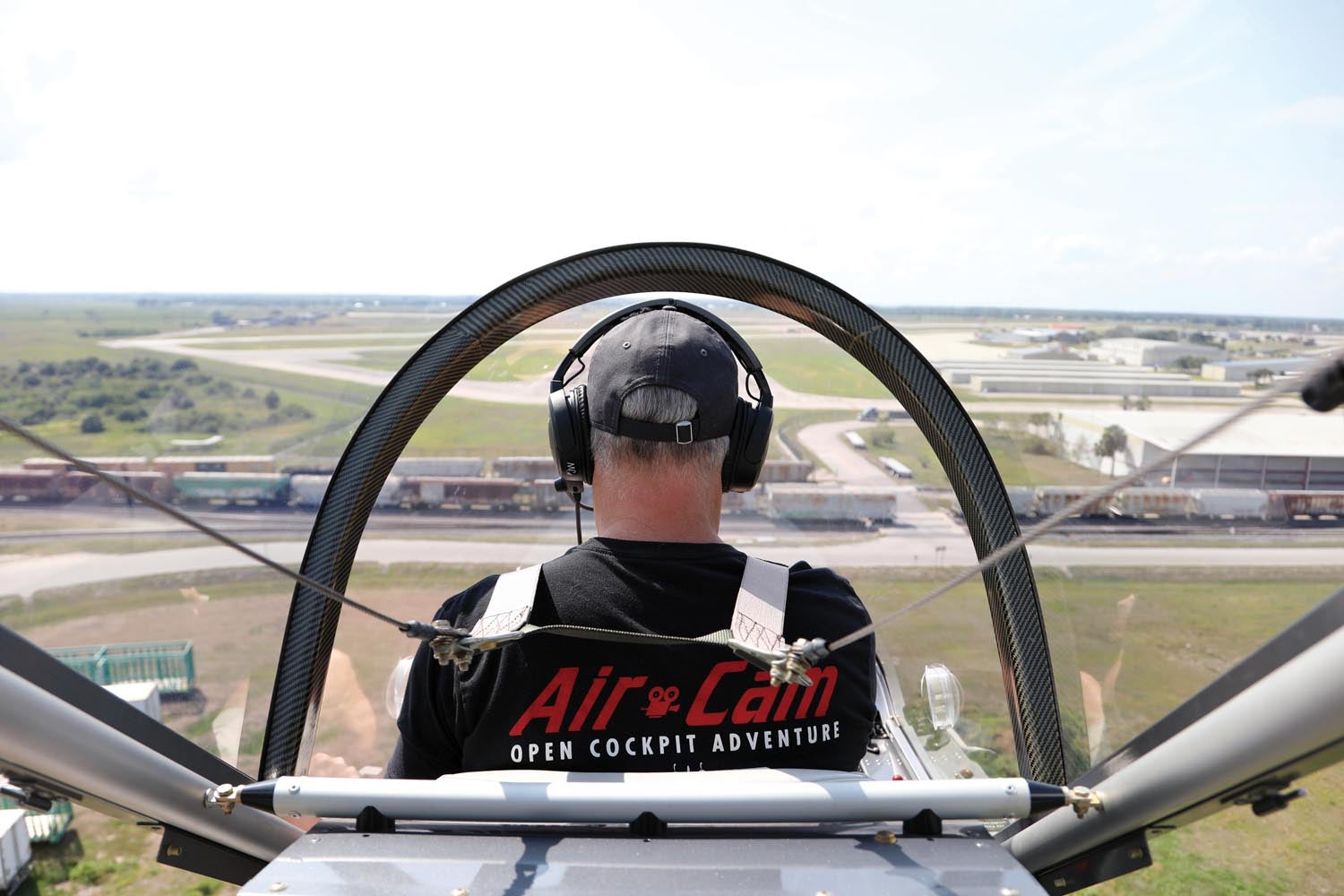
Engine failures in the training environment make experienced multi-engine pilots—used to mixture and prop controls—wonder what they are missing. The only way for the instructor to “fail” an engine is to pull the throttle back all the way, and any student pilot engaged in multiple takeoffs and landings is holding both throttles, so they instantly know that an engine is gone—and which one it is. I initially found myself putting in too much rudder too quickly and getting a bit of tail wag. Don’t anticipate—just add rudder as required, take a look at the tachs to confirm which engine is down, verbalize it, then bank a little into the good engine and head for water—the easiest place to land your crippled seaplane.
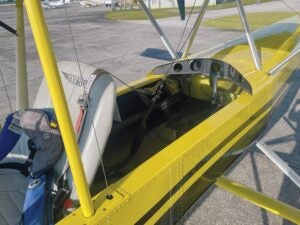
Returning to Sebring for a runway landing illuminated once again the important thing to remember with amphibious floatplanes—the mantra of always saying “this is a water landing, the gear is up” or “this is a land landing, the gear is down.” You can land gear up on the land with just a little damage, but landing gear down on the water will likely lead to a flip. Lockwood’s instructors train to say “gear up for water” on downwind, base and final—and to call “gear down for land” at the same points for the runway landing. As someone who routinely goes between fixed- and retractable-gear airplanes, I already do this, just to make sure I don’t join one of those exclusive clubs.
With Day 1 flying finished by noon, it was time to relax with the briefing material and drill those new mnemonics into my brain. And, of course, to review Vmc for the checkride. I was briefed that there would be no actual Vmc demo during the checkride but I’d have to describe it (and the aerodynamics behind Vmc) during the oral—and since that and the engine-out landings are the only differences between single- and multi-engine sea, it’s probably worth spending the time to polish them up.
Day 2
Day two of the multi-engine seaplane training dawned with similar weather to the first—calm winds and clear skies. While clear skies and no chance of rain are always welcome when doing VFR flight training, the “no wind” condition started to worry us a little, because so much of seaplane training is about handling conditions with wind. There are variations in takeoff and landing techniques for rough water, confined areas and glassy water—but when all you have is mild ripples and shifty, variable winds less than 4 knots, most of them become imagining the differences the various techniques make under the different conditions.
Along with takeoffs and landings, some of the taxi and water-handling techniques are dependent on wind—for instance, “sailing” the seaplane downwind using the flight controls to point the airplane in directions while you are carried along with the wind. No wind—no motion. Nevertheless, we practiced as much as we could for the promised checkride on day three and refined the techniques we had learned on day one, bringing performance up to checkride levels.
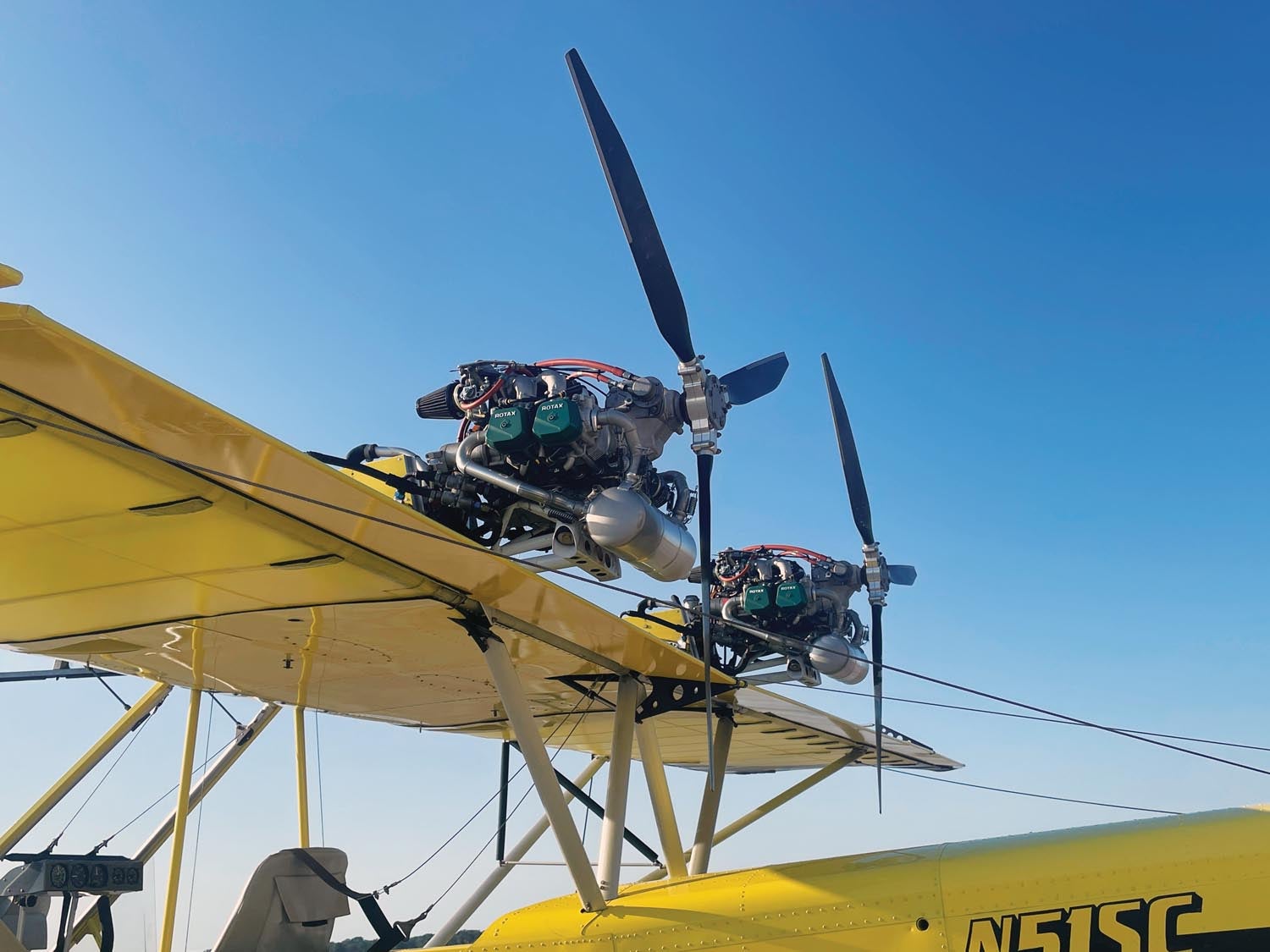
One-Engine Landings
As previously mentioned, the AirCam is remarkably docile with one engine pulled all the way back. About the only way you can mess up the exercise is to fly far enough away from a lake that you couldn’t make it back if the other engine failed. I was cautioned that in that case, the examiner would certainly pull the good engine back to idle, claiming “bad gas” had ruined your day while letting you sweat. I only needed to be told about that lesson and not experience it during the checkride, so the mantra of “never leave a landable lake” with a single engine is ingrained in my psyche.
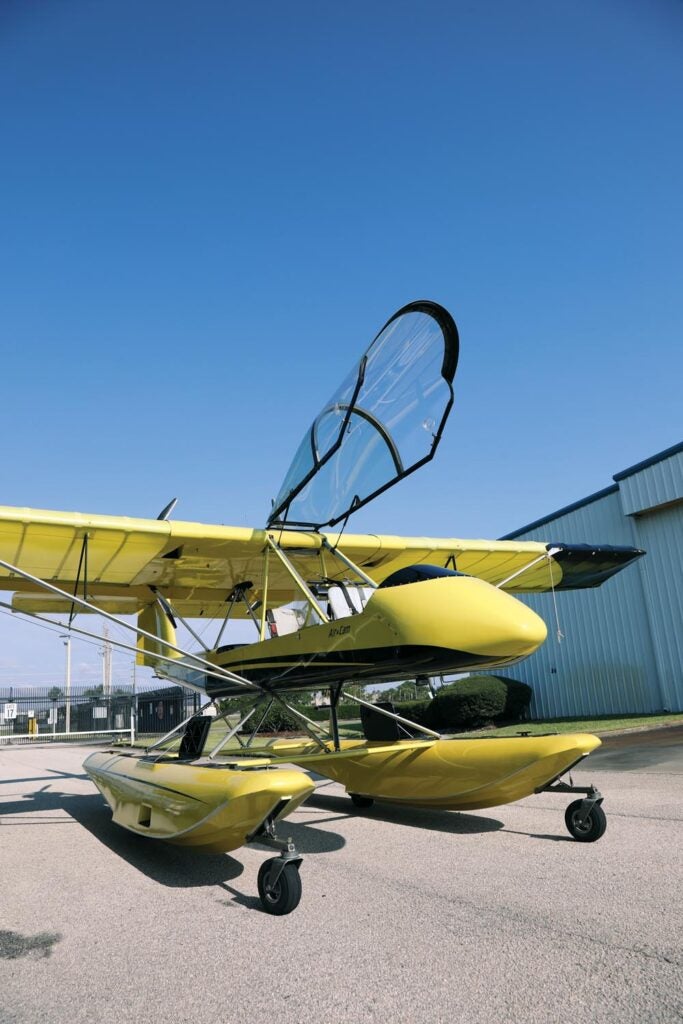
Just to reinforce the thought exercise, we practiced a full two-engine-out approach, which in the AirCam is both fun and breathtaking. The draggy machine descends and loses energy quickly without power, so the technique is not unlike an autorotation in a helicopter—you initiate a steep descent, building airspeed to (in the case of the AirCam) 85 mph until very close to lake level, then pulling back to trade that airspeed for flare energy and touchdown. It happens very fast, especially when started at 500 feet, the usual operational altitude for seaplanes in Florida.
We experienced one other slightly off-nominal moment in the morning training, that being a broken throttle return spring on one carb of one engine. Noticed after a landing on a lake about 5 miles from Sebring, the tach was indicating 3000 rpm on the left side with the throttle lever at idle. Clearly something our instructor Ben had seen before, he determined that we needed to head back to the airport to get it fixed, and—oh yeah—we’d need to shut the engine down on final or we’d never get the airplane to land. He elected to fly the single-engine land landing, but I had the engine switches in the front seat—so we played a good game of crew coordination, and when he was ready to “lose” the engine, I secured the ignitions, he landed and I then started it back up for the taxi to the ramp. In 10 minutes, we had a new spring installed (Lockwood is one of the best-known Rotax service centers, with parts on hand) and were winging back to the lakes to finish our polishing. The end of the day saw logbooks filled out and endorsements typed onto stickers.
The Checkride
Lockwood’s MES training program utilizes its proximity to the famous Jack Brown’s seaplane base to its advantage—located just 45 miles away (as the AirCam flies), it is well known as the place to go and get a single-engine seaplane rating in two days. More importantly, it is the home of Jon Brown, former owner of the base and probably the single most experienced seaplane DPE in the business. When I took my SES checkride several years ago, he still owned the facility but decided to semi-retire since then. The business is still owned by the family. Jon does fewer checkrides, but does all of Lockwood’s and understands the AirCam.
Of course, taking the checkride in Winter Haven means that you saddle up early in Sebring and get a bit of cross-country flying before ever getting to the examiner. An early summer morning in Florida might be iffy when it comes to weather but in our case the winds were calm, dewpoints low and it was a perfect flight at the dizzying height (for a seaplane) of 1000 feet agl. We watched the sun come up as we preflighted and launched across the citrus groves and lakes of central Florida, arriving on time for our 8 a.m. appointment. Brown’s Seaplane base is on a small lake adjacent to the Winter Haven Airport, so we made a runway landing (Brown prefers to start the checkride with a hard-surface takeoff) and taxied over to the corner of the airport where the base has a through-the-fence arrangement, leaving the AirCam right in the parking lot.
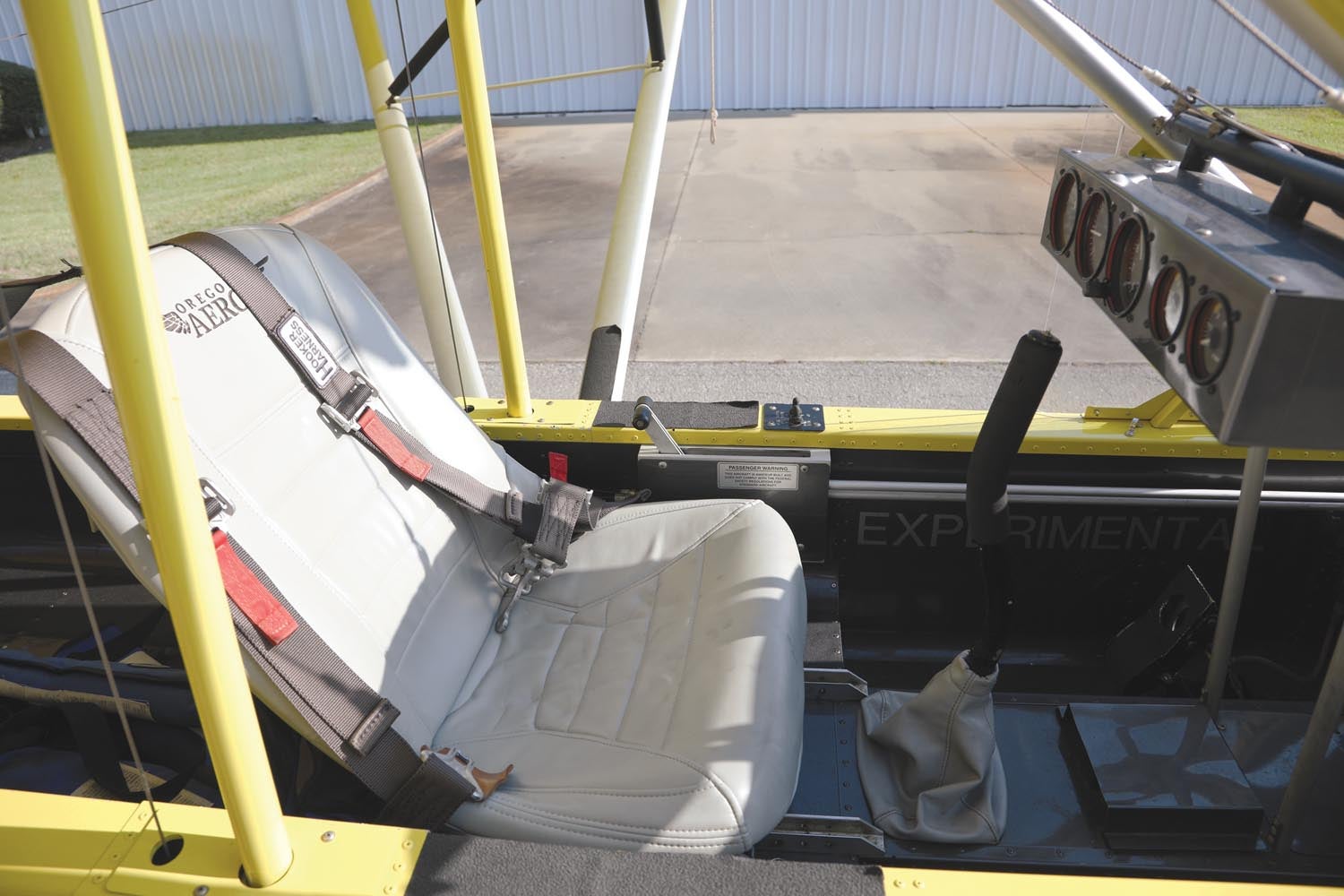
Jon Brown is a treasure trove of experience when it comes to seaplane flying, and taking an oral exam and checkride with him is a pleasure. Sure, there are the usual butterflies when it comes to any checkride, but after sitting down with him, we talked about all sorts of aviation-related topics to get to know one another before getting down to the business at hand. It’s obvious he knows how to get folks to relax—and after all, being all tensed up is no way to be evaluated.
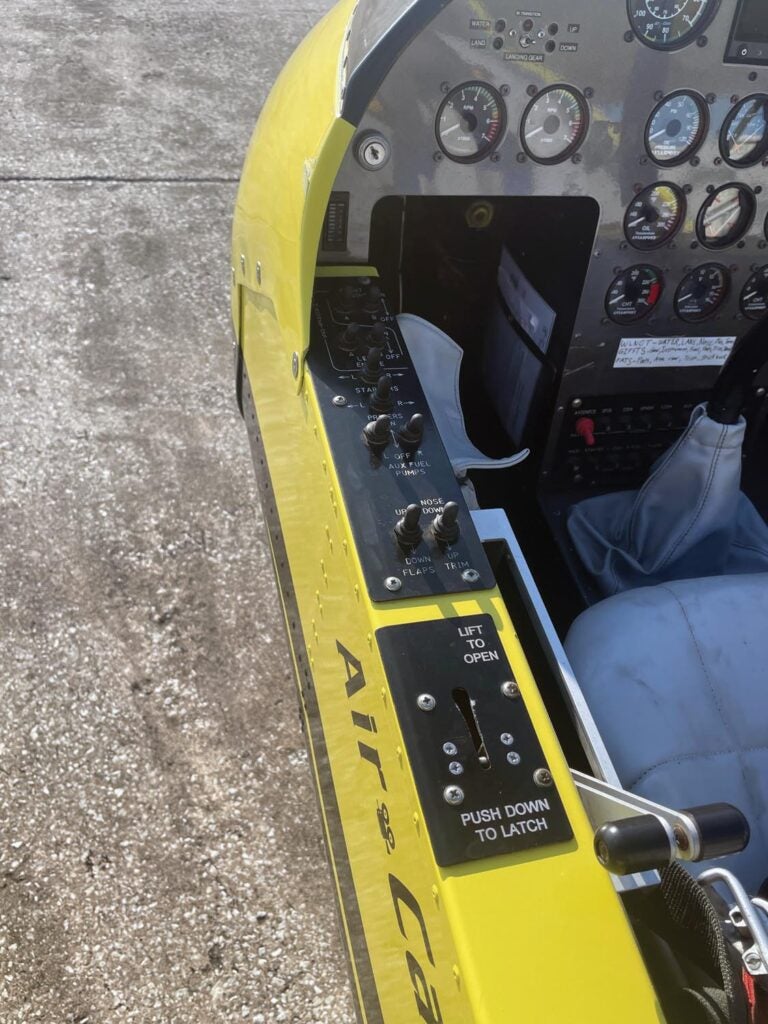
A good oral probes not only memorized knowledge but the “why” behind the knowledge, and I’d characterize my exam more as a discussion of seaplane related topics than a question-answer session. The oral questions were mostly seaplane specific, but not multi-engine-seaplane specific. In fact, the only thing we talked about with multis were Vmc and how to dock with differential power. The answer to Vmc, by the way, is that it is caused by asymmetric power—if you start losing yaw control, pull the power back on the good engine. That’s what Jon wants to hear.
With the oral complete, we did the typical walkaround inspection, then strapped in, fired up and taxied to the runway for a standard departure. He gave me progressive taxi instructions to Runway 5 (this wasn’t a test of my ground navigation after all) and we launched into the ride—which was pretty much a repeat of the rehearsal I did with Ben the day before. The lakes within 5 miles of the airport (we never strayed farther than that) were all about half glassy, with minor ripples on the parts that had any texture at all.
The fact of the matter is that most of the checkride itself was the same as my single-engine ride, except for the engine-out landing. But it was a good review nonetheless, since I have only flown one or two seaplanes since I got my rating, because it is virtually impossible to rent one. If you’re not buying or building your own seaplane, you are unlikely to fly one—and that’s a shame. The AirCam is more than just a MES oddity. It’s a huge amount of fun on a warm day above, and on, the water.
